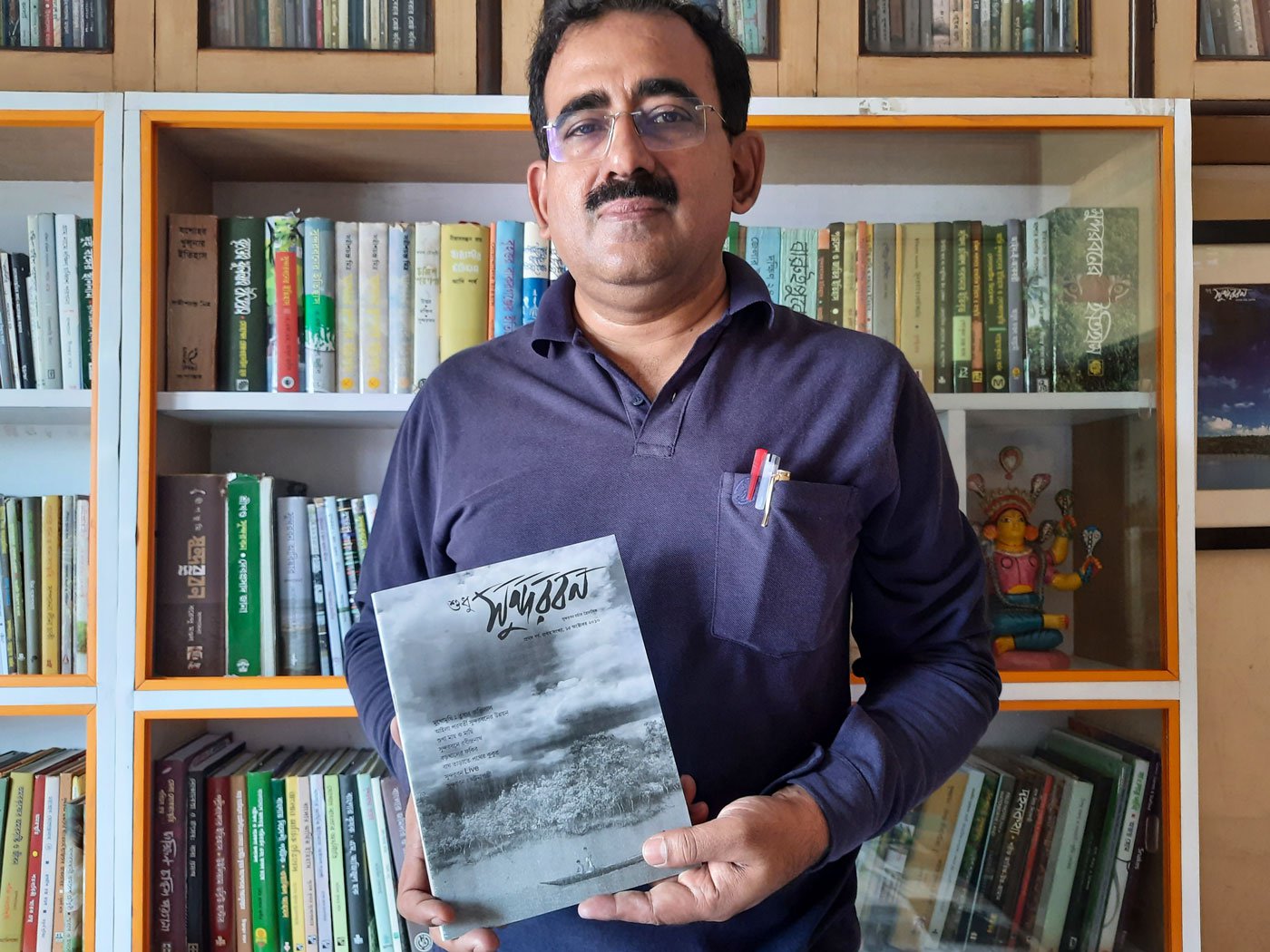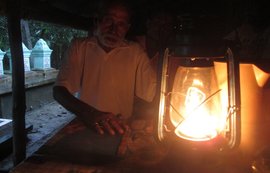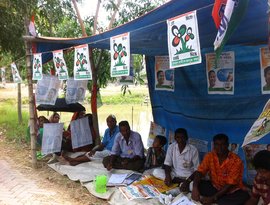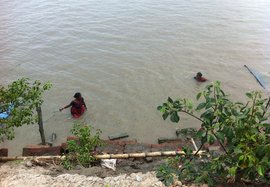It’s a Sunday morning, but Jyotirindra Narayan Lahiri is busy. In a corner room of his apartment in Hooghly district, the 50-year-old is poring over the first map of the Sundarbans prepared by Major James Rennel in 1778.
“This is the first authentic map of the Sundarbans based on a survey by the British. This map shows mangroves extending right up to Kolkata. So much has changed since then,” Lahiri says, his finger tracing the map. Straddling both India and Bangladesh, the Sundarbans, the site of the world’s largest mangroves, is known for its immense biodiversity and, of course, the Royal Bengal Tiger ( Panthera tigris ).
The bookcases lining the walls of his room are packed with hundreds of titles on every conceivable subject about the Sundarbans – flora, fauna, daily life, maps, atlases, and children’s books in English and Bengali. This is where he researches and plans issues of Sudhu Sundarban Charcha , a quarterly publication about the Sundarbans that he started after Cyclone Aila left a trail of devastation in the region in 2009.
“I made repeated trips to see the condition of the area. It was frightening,’’ he recalls. “Children were out of school, people had lost their homes, masses of men had migrated, and everything was left to the women to take care of. The people’s fate entirely depended on whether the river embankments would stay in place or collapse.”
Lahiri found media reports on the disaster sparse and superficial. “The media recycles stereotypes about the Sundarbans. Typically, you will find accounts of tiger attacks or rain. When it isn’t raining or flooded, the Sundarbans is rarely in the news,” he says. “Disaster, wildlife and tourism – that is the sum of what interests the media.”
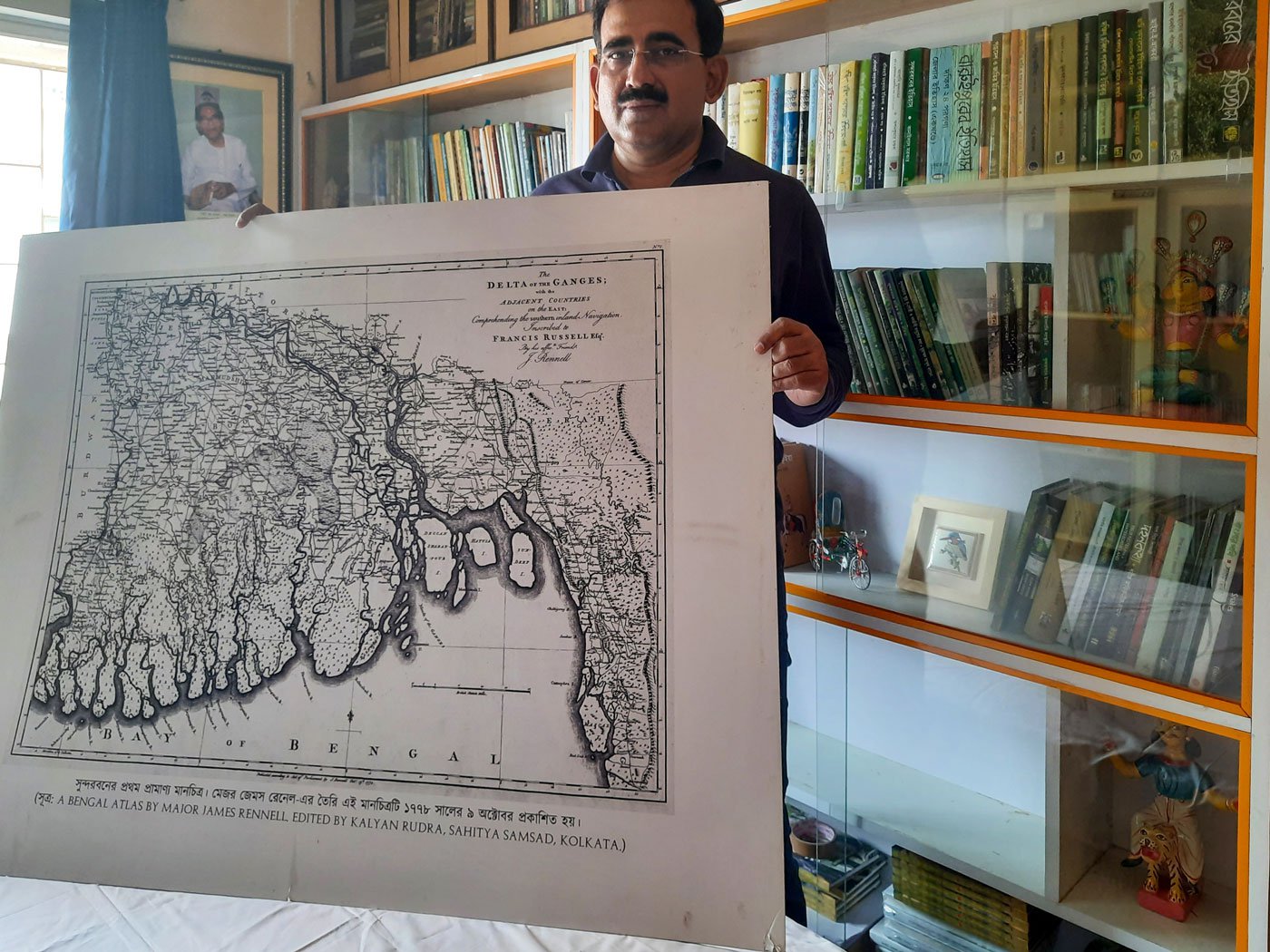
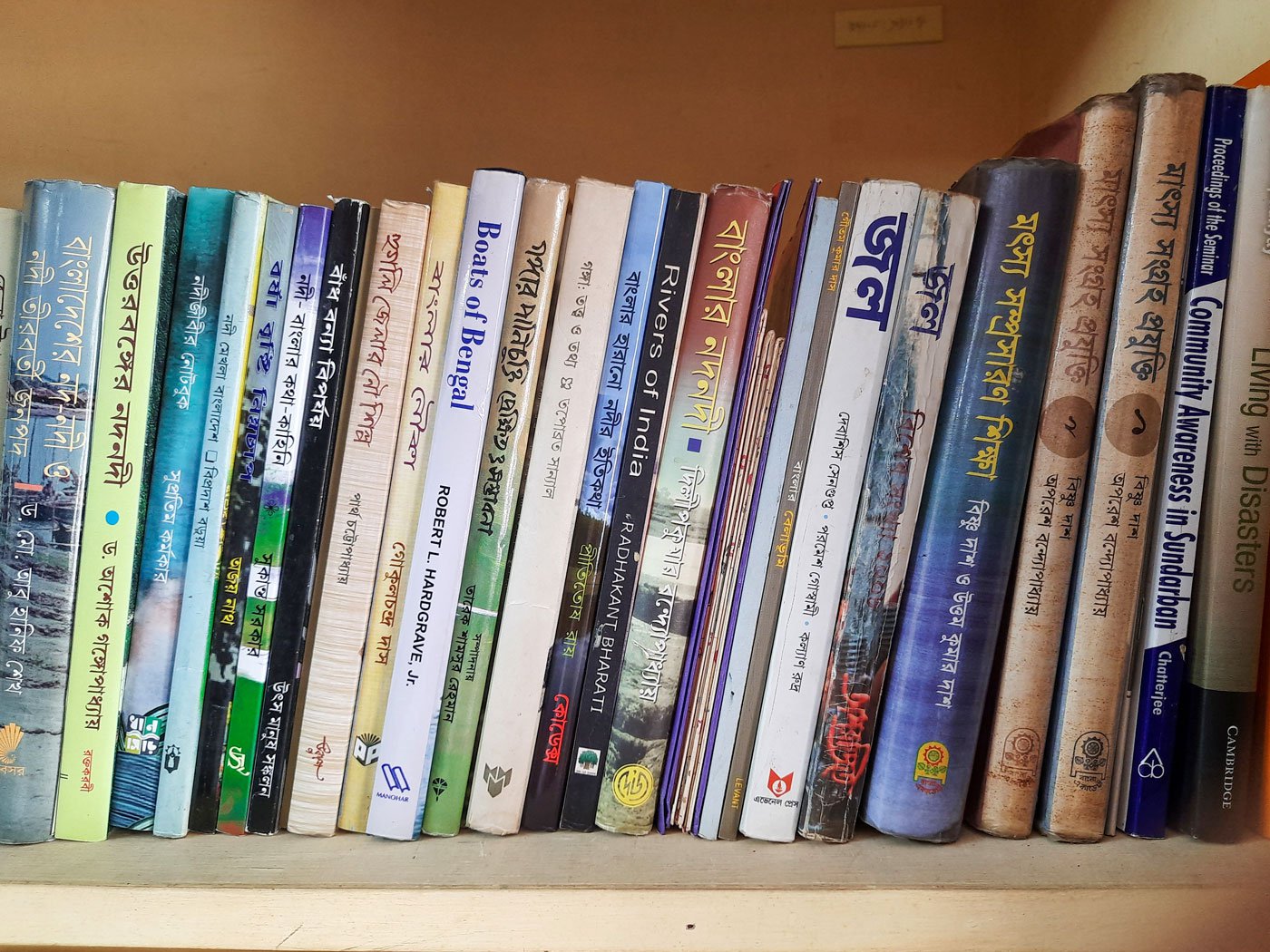
Lahiri holds the first map of the Sundarbans (left) prepared by Major James Rennel in 1778. In his collection (right) are many books on the region
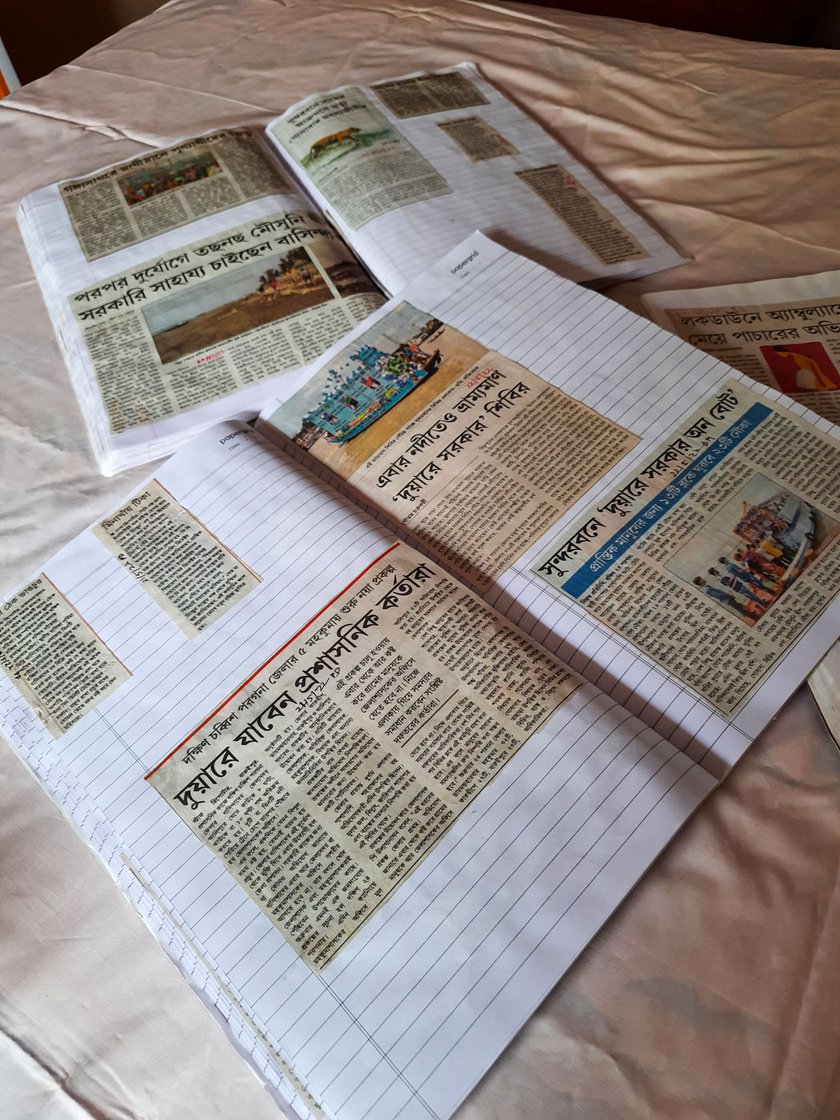
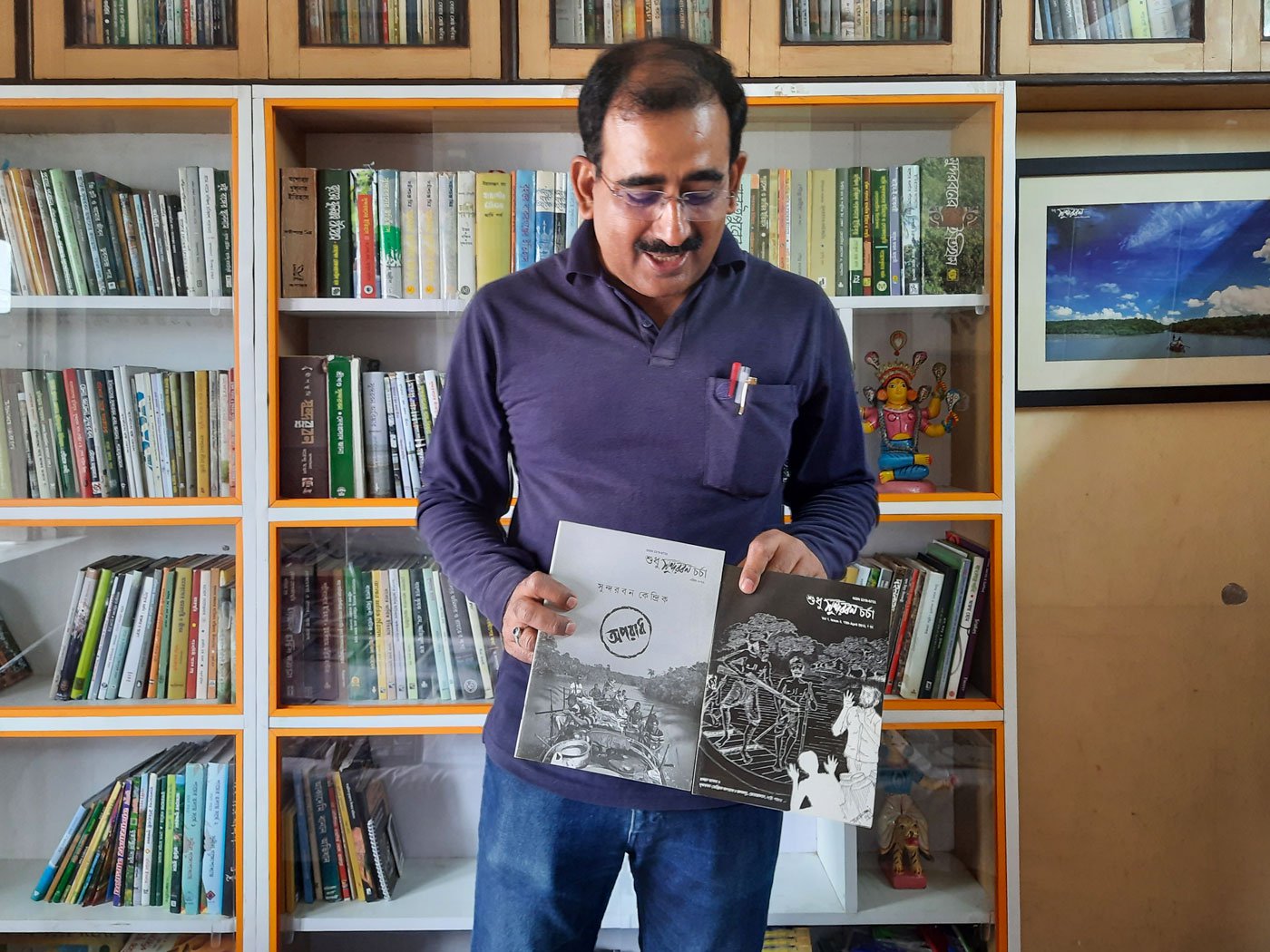
Lahiri has been collecting news (left) about the Sundarbans for many years. 'When it isn’t raining or flooded, the Sundarbans is rarely in the news,' he says. He holds up issues of Sudhu Sundarban Charcha (right), a magazine he founded in 2010 to counter this and provide local Indian and Bangladeshi perspectives on the region
He founded Sudhu Sundarban Charcha (loosely translated as ‘Just Sundarbans Discussions’) to comprehensively cover the region from both Indian and Bangladeshi perspectives. Since 2010, he has published 49 issues of the magazine and the 50th issue is slated to be published in November 2023. “Past issues have focused on everything, from how paan is grown, to maps of the Sundarbans, the lives of girl children, profiles of individual villages, piracy and rainfall,” he says. One issue even discussed how media covers the Sundarbans, featuring perspectives from journalists in West Bengal and Bangladesh.
The magazine’s last issue published in April 2023 – its 49th – is dedicated to mangroves and tigers. “Sundarbans are possibly the only mangroves in the world where tigers live. Therefore, we planned an issue around this.” he says. Planning has also begun on the 50th issue, which will focus on the work of a retired university professor who has extensively researched how climate change and rising sea levels impact the Sundarbans.
“Our readers are usually students and university researchers seeking specific data or information, and individuals genuinely interested in the region. We even have 80-year-old patrons who read our issues line by line,” says Lahiri.
Approximately 1,000 copies of the magazine are printed each quarter. “We have 520-530 regular subscribers, mostly in West Bengal. The magazine is couriered to them. Some 50 copies go to Bangladesh – we do not directly courier these copies as that becomes too expensive,” Lahiri explains. Instead, Bangladeshi booksellers purchase copies from Kolkata’s popular book market in College Street and carry them back to their country. “We also publish Bangladeshi writers and photographers,” he says.
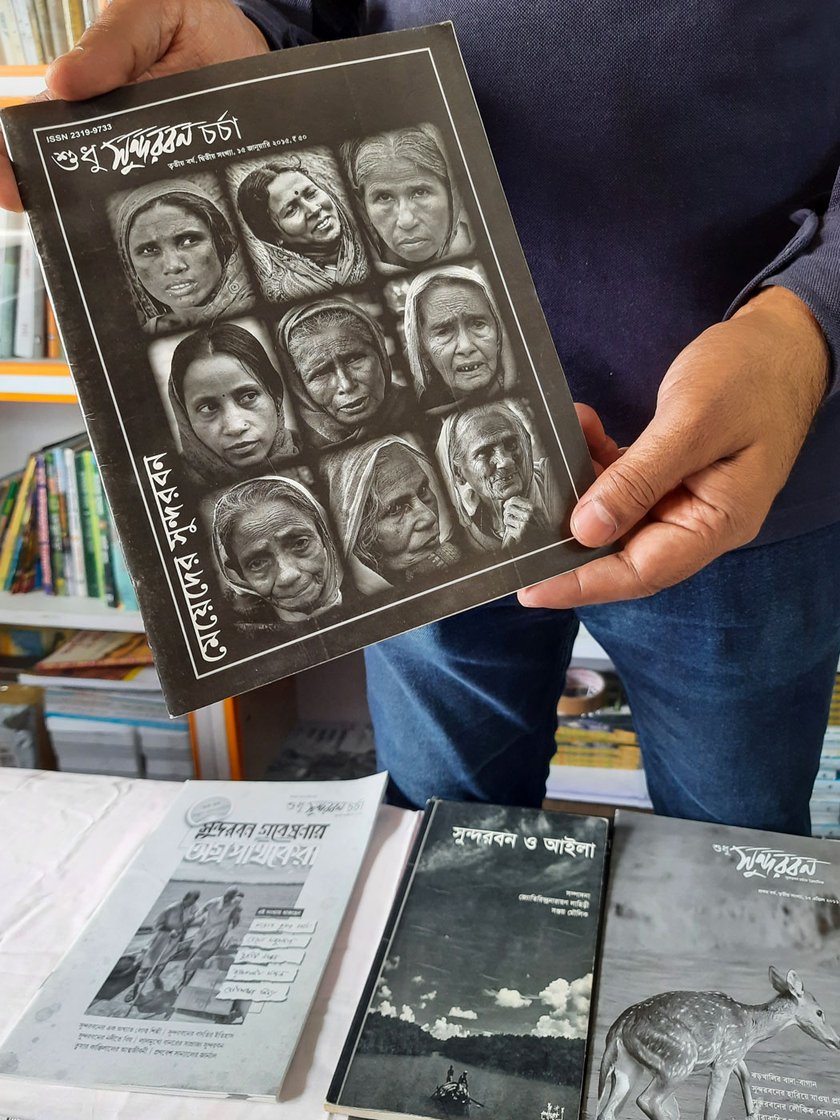
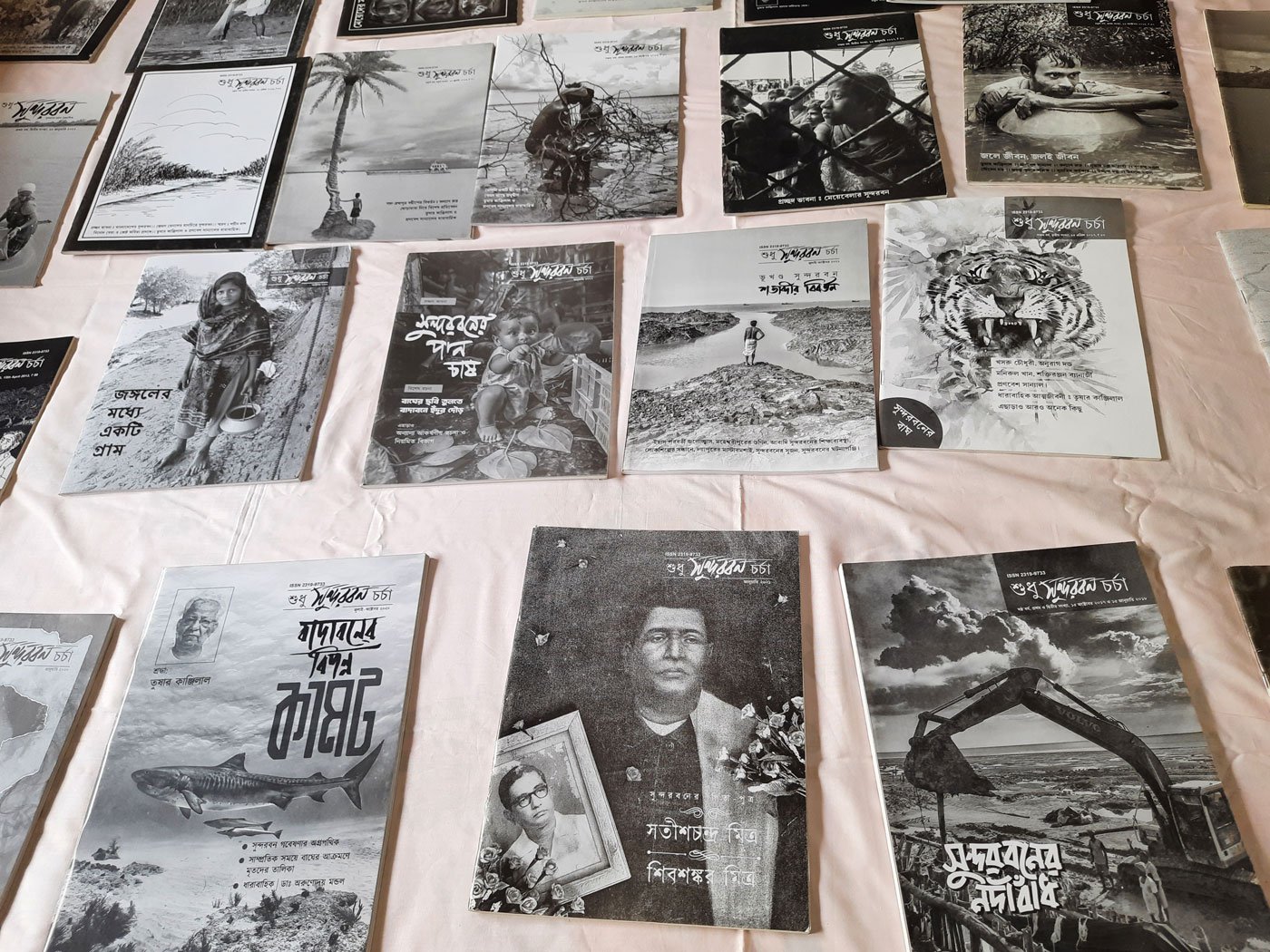
Left: An issue of
Sudhu Sundarban Charcha
that focuses on women in the Sundarbans. Right: Forty nine issues have been published so far
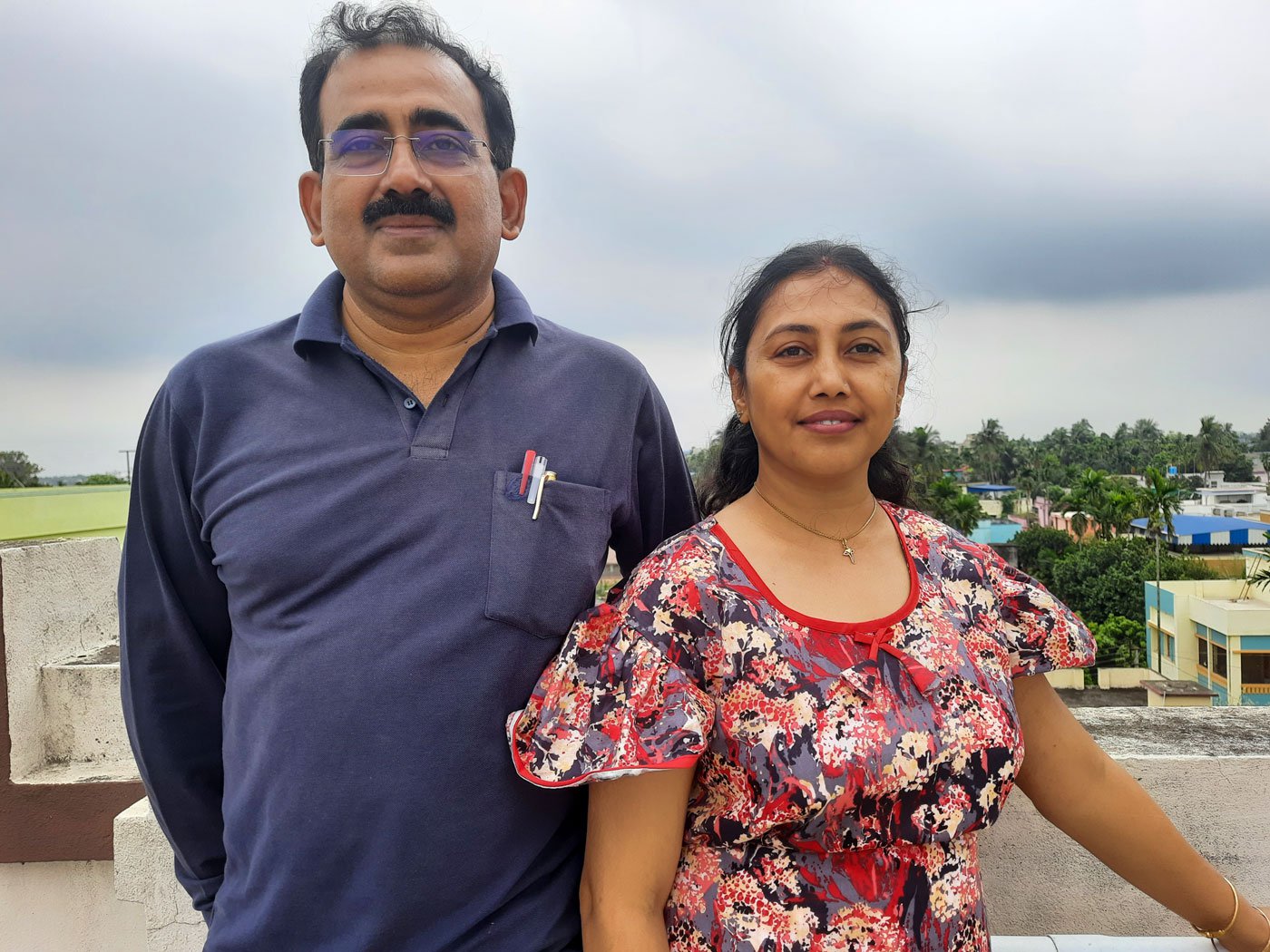
Jyotirindra Narayan Lahiri with his wife Srijani Sadhukhan. She along with their two children, Ritaja and Archisman help in running the magazine
Bringing out the magazine is a costly exercise as every edition is typeset before being printed in black and white on glossy paper. “Then, there are ink, paper, and transport costs. However, our editorial costs are not high because we do everything ourselves,” says Lahiri, who is assisted by his wife Srijani Sadhukhan , 48, daughter Ritaja, 22, and son Archisman, 15. The editorial team consists of around 15-16 members who pitch in with their time and effort free of cost. “We do not have the means to employ people. Those who contribute their time and labour do so because they care about the issues we raise in the magazine,” he says.
A copy of the magazine is priced at Rs. 150. “If our own cost is 80 rupees, we must sell [each copy] at 150 rupees because we need to straightaway give [news] stand owners a 35 per cent commission,” says Lahiri, explaining the economics of publishing.
Nearly every day, Lahiri and his family monitor six Bengali and three English newspapers for news on the region. Since he is himself a recognised voice in the area, news – of tiger attacks, for example – often reaches him directly. Lahiri also collects letters written by readers to the editors of newspapers. “The readers may not be rich or powerful, but they know their subject and ask relevant questions,” he says.
The magazine is not his only responsibility. Every day, he travels 180 km to the adjoining Purba Bardhaman district to teach Geography to Classes V-XII students in a government school. “I leave home at 7 a.m. and return only at 8 p.m. The printing press is in Bardhaman city, so if there is work to be done there, I stop by the press and return home late evening,” says Lahiri who has been teaching since the last 26 years. “Teaching is my passion, just like the magazine,” he says.
